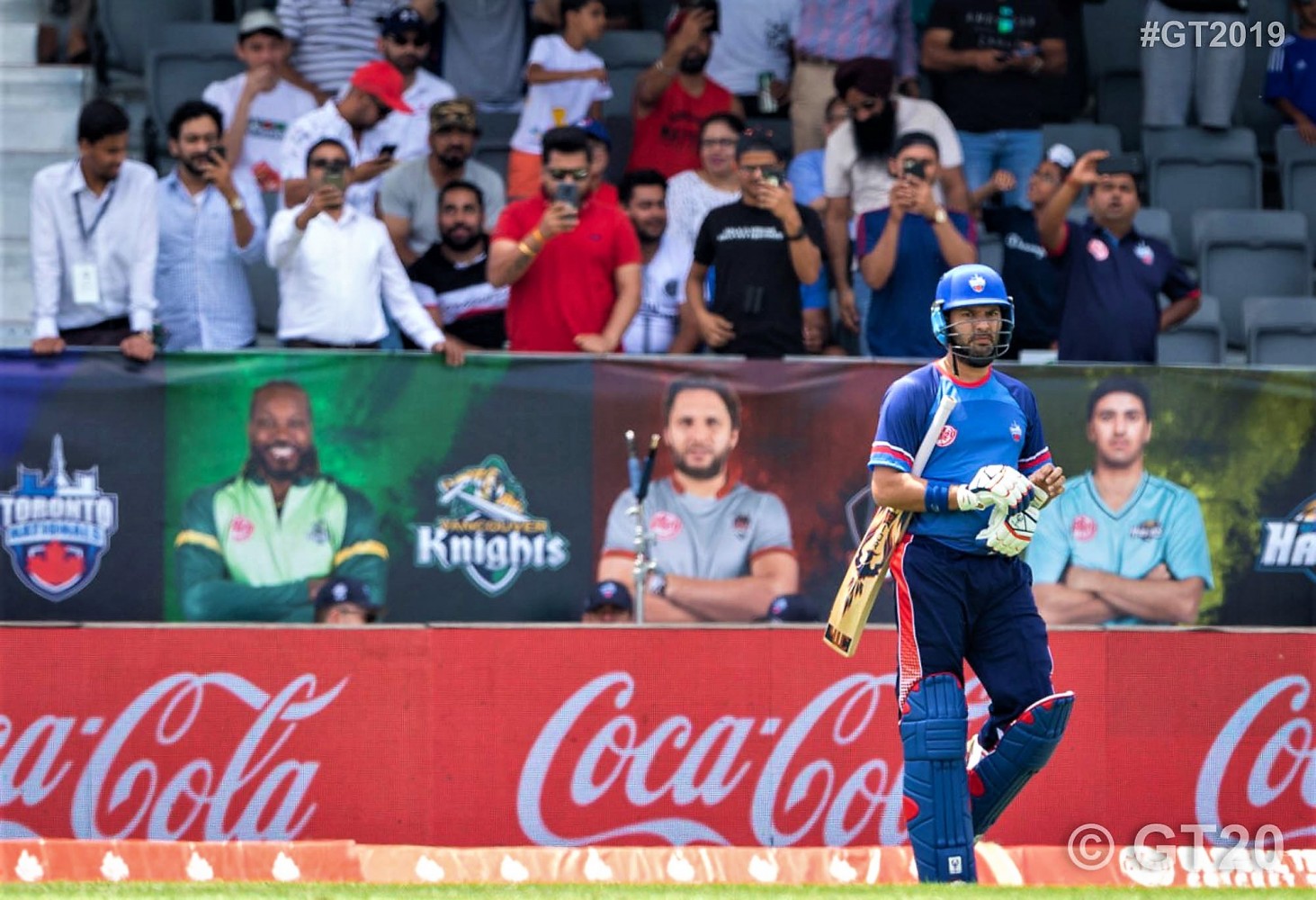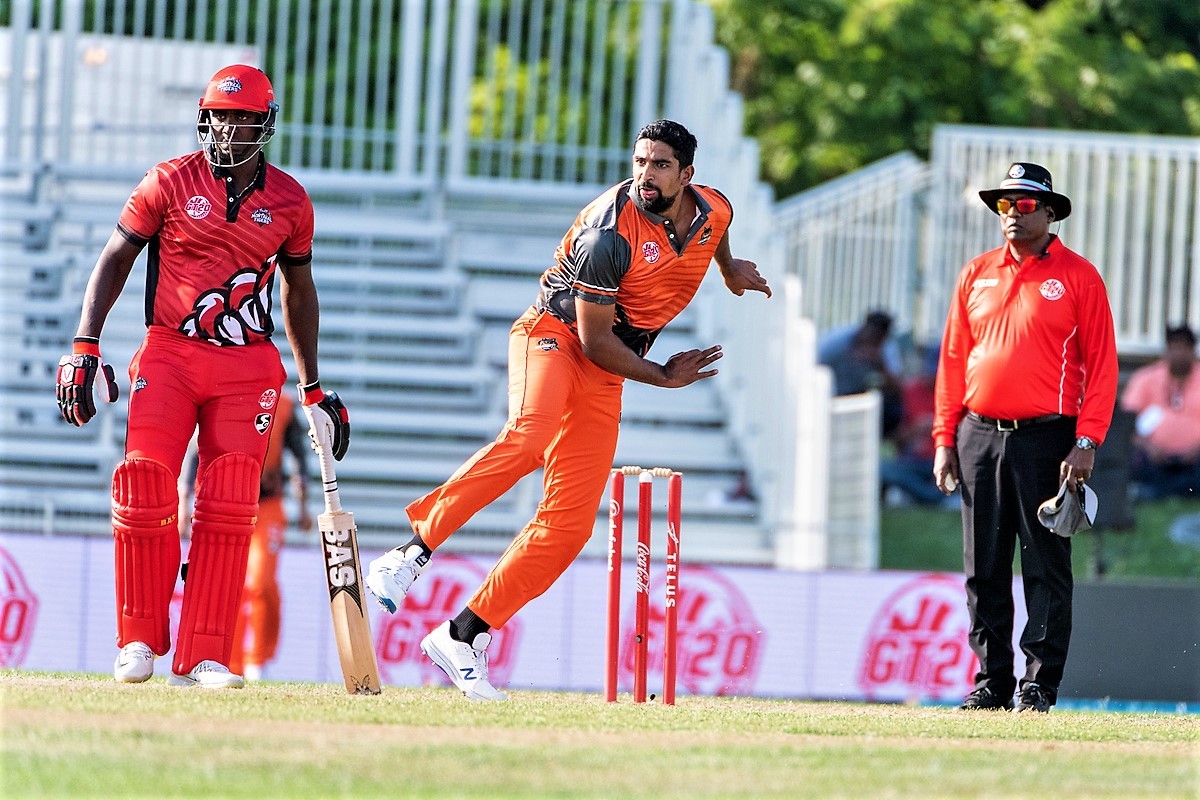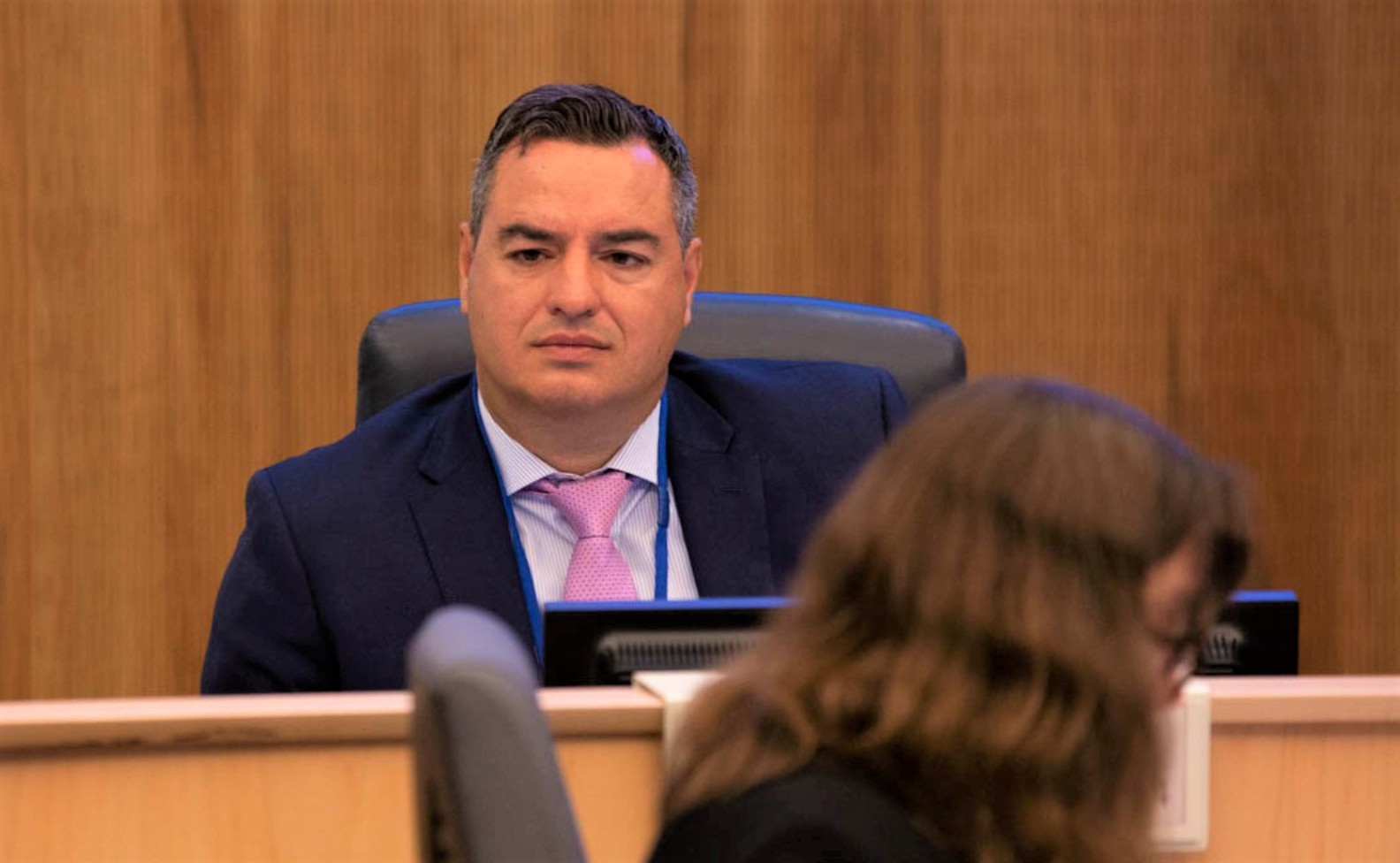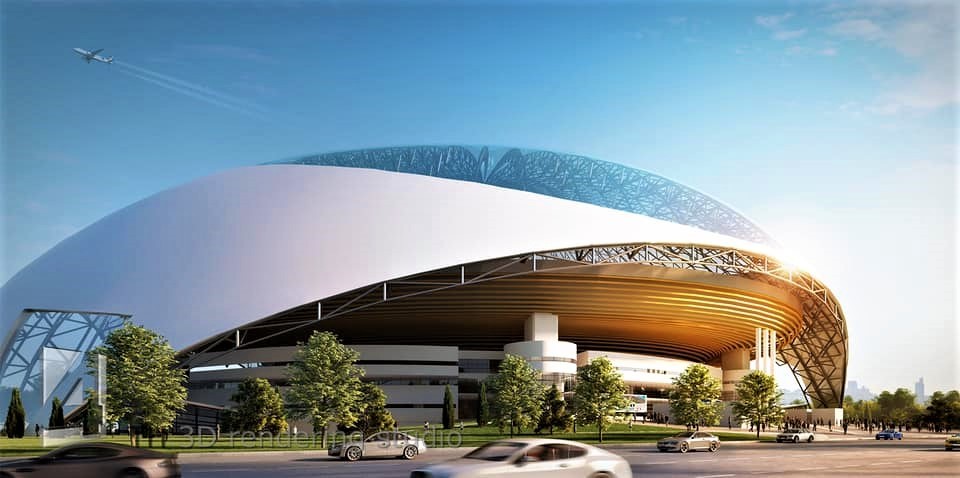
Patrick Brown promised a cricket stadium but has no clue how to pay for it
In the game's language, a Brampton cricket stadium may seem like a harmless straight delivery—it is more of a googly instead.
The term describes a ball hurled with a spin that sends it in the wrong direction for the batter.
Brampton Mayor Patrick Brown has also misdirected residents about his promise to have a world class cricket stadium built this term.
He made the pledge as part of his election campaign in 2018 and has occasionally used the claim since, while speaking to segments of the population that support investment in cricket infrastructure.
The problem with Brown’s approach to leadership is his compulsion to make grand promises for big ticket items like a brand new university or a world class cricket stadium, while simultaneously cutting the municipal budget to the bone, squeezing revenues dry because he knows lower property tax bills are obviously politically popular, even though failing to fund his promised projects is irresponsible leadership.
Taxpayers will pay a much steeper price when Brown’s leadership has to be paid for, as badly needed costs can’t be ignored for long.
As the Brampton Board of Trade and other local groups stated during the recent budget deliberations, Brown is steering the city toward crisis, as critical infrastructure and badly needed projects have been stripped bare by a mayor who doesn’t seem to understand that it costs money to create a truly dynamic, modern city with all the services and amenities residents expect.
Council, meanwhile, is left trying to chase the uphill goal of pleasing the cricket-crazed segment in Brampton while balancing the city's other pressing needs, like a fully-functional second hospital.

The Global GT20 Cricket tournament, featuring many of the best professional players in the world, was held at a temporary stadium erected at Brampton's CAA Centre grounds in 2019.
(GT20 Cricket)
On November 30, City staff gave council a report titled, “Budget Amendment and Request to Begin Procurement for the Design, Contract Administration and Advisory Services of a Cricket Stadium”.
For some reason, Mayor Brown, instead of having an open discussion with the full participation of the tax-paying public, pushed the stadium discussion to a closed session, in camera, away from residents and stakeholders.
“I believe that requires some in-closed discussion,” he said, when the item came up. “Can we stand that down when we deal with other closed items.”
Council then moved on to other reports that needed to be addressed in the budget process. One was directly related to the stadium, under the “Recreational Facility Investment by Ward” report, which Councillor Martin Medeiros asked for.
Council members deliberated over whether there is merit in setting up smaller community recreational hubs in individual wards for sports such as cricket, rather than investing in huge facilities that come with a host of logistical and financial issues, from funding, to operational costs, maintenance, staffing and decisions about who determines the uses for a stadium, and who, ultimately, manages it.
Eventually, a week later, when the council members emerged from the postponed closed session, a new motion was brought to the pitch.
It was brought forward by Councillor Medeiros on December 6, and says that staff be requested to report back to council in early 2022 with a report on a framework for a public-private partnership (P3) option for a multi-purpose cricket facility at the CAA lands, where the City retains ownership of all or most of the CAA lands, and options for possible private sector facility development and/or management.
Brown, after talking up the cricket stadium earlier in 2021, dropped his aggressive talk prior to the budget process, and when the proposal for the City’s 2022 financial blueprint was eventually made public by senior staff, there was not one cent recommended to fund Brown’s stadium.
The new motion calls for a possible “Request to Begin Procurement” once Council gives approval. But there is no money set aside in the 2022 budget for the project itself, despite Brown’s promises to have a cricket stadium built before the end of 2022.
That will not happen.
The question now, just like those being raised around Brown’s Brampton University promises, a project that has been effectively abandoned after the mayor’s various PR efforts to draw attention to a plan he claimed was a sure thing, is whether or not the cricket stadium was little more than an election stunt devised by a man with broad political ambitions.
Will there be a serious effort to get a “world class cricket stadium” built?
Often reserved for complex projects, P3 projects are not new to Brampton.
The CAA Centre, which would stand next to any multi-purpose cricket facility, was also a P3 project. So was Brampton Civic hospital. Neither worked out well for the city. Sources with the Province have told the Pointer the massive cost overrun for Civic Hospital—it was initially pegged at $357 million but ended up costing Ontario taxpayers more than $1.2 billion—is the main reason provincial funding has not flowed for further healthcare expansion in the city, after the private partner walked away the big winner from the P3 deal.
The CAA Centre has been a huge white elephant and by 2009, Brampton taxpayers had pumped in $6 million in subsidies just to keep the facility operating, after staff and elected officials had claimed the P3 arrangement would be a huge win for the city.
But council, with no money available for the stadium due to the four consecutive budgets Brown has forced, agreed to explore the P3 idea. The Budget Committee received the staff report and unanimously passed the motion put forward by Councillor Medeiros.
“We look forward to what possibly could be some of the ideas that people have for this property,” Medeiros said during the December 6 Budget Committee meeting.
“The possibility of us having some form of stadium that provides itself to some entertainment aspect, which is much needed in Brampton is exciting.”
Medeiros said the new motion is a measured approach for the council to still control the process, understand what residents want for their city and engage with them.
The language suggests a departure from Brown’s grand claims of a world class cricket-only stadium. Medeiros is now talking about a more manageable facility, one that could be used for numerous events and different sports.
This may not sit well with the South Asian-Canadian voters Brown targeted when he made his promises for a new cricket stadium.
Council deliberated the possibility of creating multiple recreational facilities spread across the city versus one huge stadium just for cricket.
Medeiros said there are pockets in the city where there's no recreational facilities.
“I do not want to focus on the stadium or other big-ticket items, but if we're looking at spending big money instead of that big spanking new recreation centre—we better serve six or seven small community hubs throughout the neighborhood.”

Councillor Martin Medeiros does not want taxpayers to pay for a stadium local cricket players would not be able to use.
(The Pointer files)
Regional Councillor Pat Fortini said smaller hubs would serve more residents.
“Little, smaller hubs like I got in Ward seven when Bramalea was built, it's closer to everyone, instead of having one big one.”
“There are some parts of ward six where the population is growing and they might need to build these big ones.”
“Gore Meadows is humungous and if it was spread out in three sections across the city then it would have been easier for everyone to access.”
Fortini said having more, smaller sports-facilities would serve more residents and keep costs down.
“I think having three or having a big one, the overhead would be the same,” Fortini said.
He said to access bigger facilities, residents are dependent on cars or taking public transit.
“It is not really serving a person that doesn't drive and wants to walk 10 to 15 minutes to get there.”
Councillor Michael Palleschi echoed Fortini’s words.
“Maybe there is an opportunity to get more people walking to the community centre rather than driving, or using public transportation.”
Medeiros told The Pointer, “The most important aspect is first the cost, I want to understand how are we going to pay for this?”
“The second is understanding why they punted it to another year. That may be with a sole intention to try to get a zero (budget increase) in this fiscal year in this budget but if tomorrow we have to pay for the stadium, what's the use of us doing zero today?”
Medeiros says the taxpayers will have to bear the burden eventually.
“The tax increase is going to be eventual, if not today, it's going to be tomorrow. We still have to deal with the cost of the stadium.”
He says there is a lot of mixed messaging in the community around the stadium’s need and use.
“I still haven't understood the need.”
He said it remains unclear who would benefit most from a world-class cricket stadium, and who would actually be allowed to use it, raising concern that for the city’s cricket lovers, investments should be made that maximize their ability to play the sport on a proper pitch. Those connected to the international cricket scene who have been pushing the stadium idea and getting close to Brown, have never explained what international events would even be played, how often the stadium would be used and if local players would have constant access. It’s also unclear if there would be only one pitch, and how that could meet the growing demand among local players.
Medeiros said the city should instead focus on a multi-sport facility so more residents can have access to public amenities.
“I've heard from my residents, instead of building this big stadium, they have small community hubs, something that they can walk to.”
“Cricket people in the city come to me and say that they support the stadium and they can't wait to use it.”
He said the idea of an amateur Sunday league or a resident who wants to play cricket with his friends getting access to a world class stadium does not make sense.
“People have to really understand, if we build a stadium with a capacity of 20,000 we're going to try to make sure that it gets rented out and the only people who can pay the prices of a stadium, notwithstanding the G20 League, are going to be more professional level teams from outside of Brampton.”
He says if the stadium replaces two cricket fields at the CAA lands and no one except professional teams will be able to access the stadium, it may not be the best use of taxpayers’ money.
“We're displacing two fields that currently community residents playing the cricket leagues are using.”
Medeiros said he would rather spend the money for the community, not for the tournaments [with big banks] coming from outside the city.
“Do we want a stadium that is going to be used for sports and entertainment for outside events? Is that the best value for money for the residents of Brampton?”
The Pointer reached out to the City on actual expenses incurred toward maintenance of current cricketing facilities at the CAA grounds but did not receive the information.
Councillor Jeff Bowman says healthcare should be Brampton’s number one focus, and taxpayers are demanding local investment to improve the dire situation at Brampton Civic, the city’s only full-service hospital.
Bowman too wants the stadium, if it is pursued, to be a multi-sport facility that residents would have access to.
“I want to know what type of multi-purpose field this will be, what sort of access community groups are going to have to the field or is it strictly going to be for higher-level cricket players.”
Bowman is worried that not everyone will have access to the stadium, especially kids who should be the focus.
“We're going to remove those two fields which everybody has access to and put in one huge field that I don't think everybody will have free access to.”
Bowman said, “I can do the math: you take away two, and you put in one, that sure leaves a lot less space for any kids who want to play especially if those fields are going to be used by, you know, adults and high-level cricket players from Brampton, Mississauga or wherever they might come from.”
He says many questions about a stadium have not been addressed by staff or Brown.
“Are we going to lease land to an organization that's going to run the stadium and be responsible for the upkeep or is the city going to give away the land, or are we going to actually run it?”
An earlier staff report, which caught some members of council off guard, said, “The new cricket stadium at the CAA Centre lands will be used for local, national and international tournaments, drawing national and international audiences, providing great economic and community benefits, and solidifying the City of Brampton as the ‘Cricket Capital of Canada’.”

A rendering of a proposed professional international cricket stadium in Fort Erie.
(CPLT20 Facebook page)
The report also said the CAA Centre site will allow the City to accommodate a variety of tournaments, including the 20-over cricket league and the Global T20 Canada (GT20) league.
Even if the city gets a stadium, there is no commitment yet that the GT20 League would host games in Brampton.
“I have not seen any commitments or any confirmation that if we build the stadium that the G20 League would be here,” Medeiros said.
Medeiros said he can not support a stadium which would be funded 100 percent by taxpayers, with little benefit to many of them, particularly cricket lovers who he wants to build community-based facilities for.
He told The Pointer that a stadium may, however, still be a possibility, if there’s some form of beneficial public-private partnership.
A public-private partnership was always on the agenda, since 2018 when Mayor Patrick Brown had first announced the cricket stadium in Brampton.
“That Powerade [also a P3] project in the CAA land, that wasn't the best deal for the City of Brampton,” Medeiros said.
Infrastructure Ontario states that P3 projects come with many potential risks. Design errors and omissions, unforeseen site conditions, labour and material costs, ongoing maintenance and financial risks, are common in P3 contracts.
Brampton Civic Hospital too was a P3 project and the private partner passed the massive cost overruns onto taxpayers. Brampton residents ended up with only about two-thirds of the beds it was supposed to open with in 2007.
Brampton City Council has seen about a half-dozen delegations from the local cricket community in the past few years advocating for the cricket stadium.
October saw Faraz Saleem, president of the Brampton Cricket League and Praim Persaud, president of the Brampton-Etobicoke and District Cricket Leagues, asking for the stadium, saying leagues have more players and teams than available facilities can accommodate.
It remains unclear how a world class stadium meant for professional international play would help with local demand.
Saleem, president of the Brampton Cricket League, told The Pointer last year that demand for the stadium in Brampton is unparalleled and if need be, he can “fill-in-the-gap.”
“If you build a stadium, I can guarantee you that not even a single day will be left empty.”
It remains to be seen how this could be done in a massive facility, with seating for some 20,000 fans that is not designed or funded to be maintained for recreational use.
Meanwhile, the man who spun this googly in the first place has been quiet about why he failed to put one cent in the 2022 budget for another one of his broken campaign promises.
Email: [email protected]
Twitter: Anukul_AT
COVID-19 is impacting all Canadians. At a time when vital public information is needed by everyone, The Pointer has taken down our paywall on all stories relating to the pandemic and those of public interest to ensure every resident of Brampton and Mississauga has access to the facts. For those who are able, we encourage you to consider a subscription. This will help us report on important public interest issues the community needs to know about now more than ever. You can register for a 30-day free trial HERE. Thereafter, The Pointer will charge $10 a month and you can cancel any time right on the website. Thank you
Submit a correction about this story


